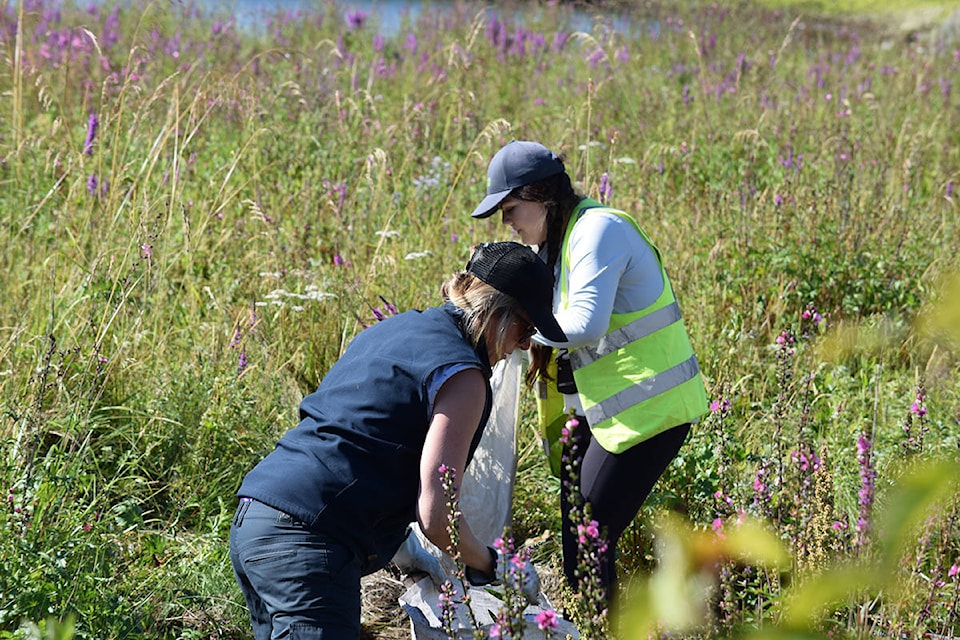A brisk ten minute hike along the Myrt Thompson Trail leads walkers to splendid views of the wetlands hugging the Campbell River estuary.
In mid-July, an untrained eye will spot a gorgeous purple sea of flowers. To the gaze of any environmentalist, however, the scene is a troubling one.
The picturesque plant is purple loosestrife, an invasive species to North America, which can overcome a habitat quickly.
“They really out-compete the native vegetation and change the entire ecosystem of the wetland,” explained Callie Bouchard, a watershed restoration crew assistant coordinator with Greenways Land Trust.
“Unfortunately it’s one of those plants that’s beautiful, which you can purchase for your garden as an ornamental plant, but then it gets out of control.”
When it takes over an area, it replaces the native sedges, cattails, and wildflowers that provide cover and food for salmon fry, birds and other wildlife that call the estuary home.
READ MORE: Purple loosestrife: beautiful, yes, but bad for the Campbell River estuary
READ MORE: Campbell River fruit picking project a sweet success
Bouchard, four members of Coastal Guardians, and a three people from Nature Conservancy of Canada were teaming up on Wednesday morning to give the watershed fauna and flora a fighting chance.
They came equipped with Pulaski axes, trowels, and a little elbow grease for the battle.
The day before, they cleared a segment of Baikie Island.
“We tackled a nice spot that hasn’t been done for a couple years,” Bouchard said, “So it’s looking really good, it’s not fully in bloom with purple.
“Now we moved over to this side at Myrt Thompson, where it’s definitely more established with a lot of larger plants.”
The seed dispersal for the pesky plant can be quite wide ranging, but Bouchard says improper yard waste disposal is often the culprit for purple loosestrife ending up in wetlands.
Greenways Land Trust’s watershed restoration crew has been made possible by the Healthy Watersheds Initiative, a provincially-funded program to stimulate B.C.’s economic recovery through investments in community driven watershed conservation and restoration projects.
The money has allowed Greenways Land Trust to hire a crew of five full time crew members, in addition to several shorter-term contract positions, protecting and restoring watersheds throughout Campbell River with an emphasis on improving the health of our creek and estuary habitats.
If members of the community are interested in volunteering with the watershed restoration crew or aiding Greenways Land Trust in our invasive plant removal efforts, they are invited to get in touch through www.greenwaystrust.ca or 250-287-3785.
ronan.odoherty@campbellrivermirror.com
Like us on Facebook and follow us on Twitter
